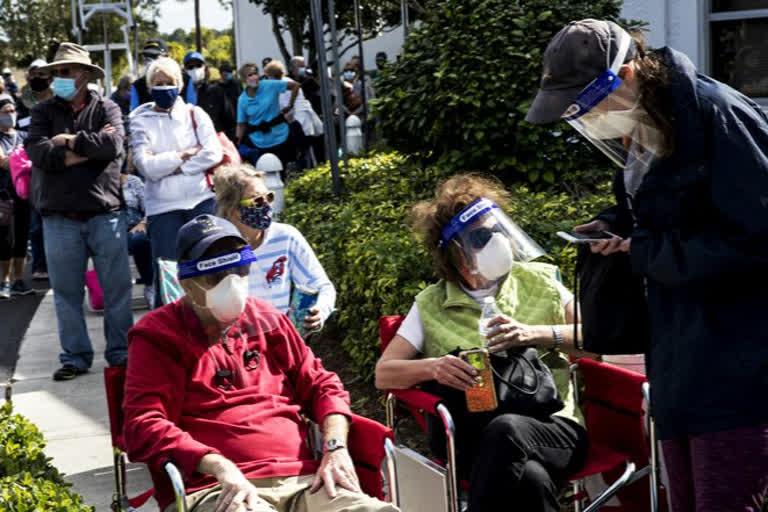Tallahassee:Terry Beth Hadler was so eager to get a lifesaving COVID-19 vaccination that the 69-year-old piano teacher stood in line overnight in a parking lot with hundreds of other senior citizens.
She wouldn’t do it again.
Hadler said she waited 14 hours and that a brawl nearly erupted before dawn on Tuesday when people cut in line outside the library in Bonita Springs, Florida, where officials were offering shots on a first-come, first-served basis to those 65 or older.
“I’m afraid that the event was a super-spreader,” she said. “I was petrified.”
The race to vaccinate millions of Americans is off to a slower, messier start than public health officials and leaders of the Trump administration’s Operation Warp Speed had expected.
Overworked, underfunded state public health departments are scrambling to patch together plans for administering vaccines. Counties and hospitals have taken different approaches, leading to long lines, confusion, frustration and jammed phone lines. A multitude of logistical concerns have complicated the process of trying to beat back the scourge that has killed over 340,000 Americans.
Florida Gov. Ron DeSantis is asking for patience, noting the vaccine supply is limited.
“It may not be today for everyone, may not be next week. But over the next many weeks, as long as we continue getting the supply, you’re going to have the opportunity to get this,” he said Wednesday.
Florida has placed a priority on residents 65 and over to receive the vaccine once medical workers and long-term care residents and staff get the shots. The decision bucks a suggestion from the Centers for Disease Control and Prevention to place a priority on people 75 and older and essential workers like teachers and first responders as the next to get vaccinated.
Also read: Second vaccine trial for COVID-19 begins in US
Dr. Ashish Jha, a health policy researcher and dean of the Brown University School of Public Health, said the main problem is that states are not getting adequate financial or technical support from the federal government. Jha said the Trump administration, principally the Department of Health and Human Services, has set states up to fail.
“There’s a lot states still need to do,” he said, “but you need a much more active role from the federal government than what they have been willing to do. They’ve largely said to states, ‘This is your responsibility. Figure it out.’”
Lags in reporting vaccination numbers explain in part why many states aren’t meeting their year-end goals, but officials blame logistical and financial hurdles for the slow pace.
Many states lack the money to hire personnel, pay for overtime or reach out to the public. The equipment required to keep the vaccines cold complicates their distribution. Also, providers need to track vaccinations so they have enough to dispense the required second doses 21 days after the first.
Dr. James McCarthy, chief physician executive at Memorial Hermann in Houston, said the hospital system has administered about half of the roughly 30,000 doses that it has received since Dec. 15.
The system had to create a plan from scratch. Among other things, administrators had to ensure that everyone in the vaccination areas could socially distance, and they had to build in a 15-minute observation period for each patient so that recipients could be watched for any side effects.
